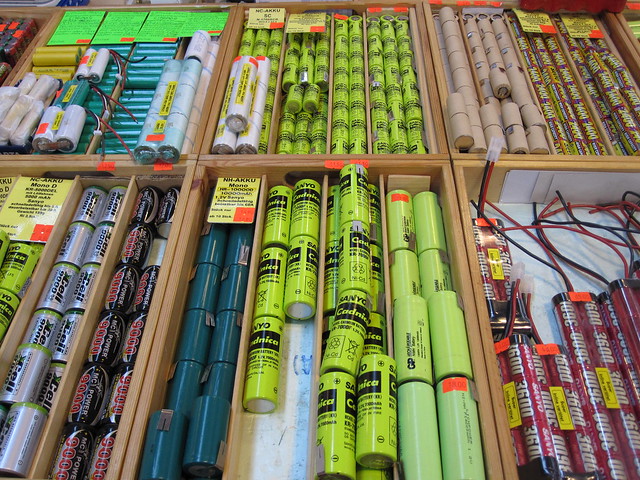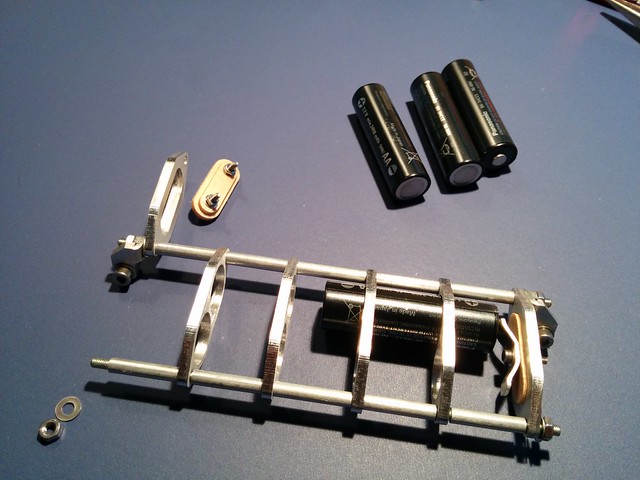Do Lithium Batteries Need To Be Drained?
Nov 14, 2019 Pageview:1161
In mobile phones, tablets, digital cameras and other electrical devices, lithium batteries are probably the most widely used energy storage devices. It is basically a false myth that lithium batteries have to be fully drained. If you allow your battery-powered devices to "dead" every day, the efficiency of the battery will be reduced over time. That is why understanding how to maintain lithium batteries can not only prolong the lifespan of the battery, but also protect your device from potential damage.
Do You Really Have To Drain Your Lithium Battery Periodically To Keep It Conditionally?
False. Today, most batteries never discharge fully.
What you see as 0 percent or "empty" if your phone or laptop is not turning on is the battery just sitting at about 10 percent charge somewhere. That's why the screen will turn on long enough to tell you to charge the battery when you hold the power button.
Also we put this very question to Daniel Abraham, a lithium-ion battery specialist at the Argonne National Laboratory outside Chicago, Illinoi. Here's what he had to say about the matter:
Current cell phones (and laptops) contain lithium-ion batteries that do not need to be regularly discharged in order to keep them "conditioned."
The suggestion for "periodic discharge" is a holdover from older types of batteries, such as rechargeable batteries for nickel-cadmium and nickel-metal hydride. Such batteries are believed to have a "memory effect" which, if they are not discharged regularly, causes them to retain less power. With lithium-ion batteries, that's not the case as they do not have a memory effect.
To understand this in a better way you should know the working of lithium ion battery which includes positive electrode ( anode ), negative electrode ( cathode ) and a chemical which acts as an electrolyte.
The current from the electric outlet causes lithium ions to pass from the cathode to the anode while charging the battery. This converts electrical energy into stored chemical energy from the outlet. The lithium ions flow back to the cathode when you unplug the battery and begin using it; so that the accumulated chemical energy is converted into a stream of electrons to drive the device. Graphite is usually the active component in the anode in commercial lithium-ion cells. When the cell is charged or inserted into these particles or when the cell is discharged, the lithium-ions are extracted from these particles.
Usually, this method of injection and removal of lithium is called intercalation which does not change the crystal structure of the host cathode or anode particles. The lithium injection and extraction cycle is 100% reversible in an ideal scenario; in fact some lithium-ions are lost in unintended reactions and the output of cell batteries is slowly degraded.
The memory effect in NiCd cell is attributed to the formation and the growth of crystals of cadmium hydroxide when the cell is held for long periods in the fully charged state. Periodic deep discharges (or conditioning of cells) restore the crystals to their original size and often restore cell performance.
Commercially available lithium-ion cells are based on chemistries of intercalation and do not demonstrate the development and growth of such crystals that is their chemistry is somehow different from the rechargeable batteries that contain memory effect.
Moreover, scientists in research laboratories around the world are working on alternative chemicals to improve battery cells ' energy and power density. Some of these cells are based on a process of "conversion" rather than intercalation. During the conversion reaction, new crystal structures are formed. We don't know if to maintain performance, these future cells will need to be conditioned periodically or not as research is going on and it will be evaluated after the experimentations.
How Do You Care For A lithium battery?
Taking care of a lithium ion battery is very important to prolong it’s life and to use it as much as you can. Following are some of the main points that should be kept in mind when using lithium batteries.
Use suitable chargers.
With electronic gadgets, many people take great care of it, but often neglect the consequences of bad chargers on their lithium ion batteries. The initial charger is the best choice when choosing a charger for the battery. If this is not possible, a high-quality charger with an overload safety feature or a charger with a brand name will do so. A battery charger of low quality can result in shorter running times, premature failure of the battery, or even fire or explosion.
Avoid overloading frequently.
The battery's interior can rise to a high temperature over-charging with a low-quality charger, which is bad for the lithium ion battery and charger. Therefore, clearly full charge is good enough-overloading can render your lithium battery and a little explosion could be there if overload security is lacking.
Avoid contact with metal.
For best performance, all contacts of batteries must be kept clean. Do not allow the contacts to touch metal objects such as keys while carrying batteries around; this could cause a short circuit, destroy the battery, and potentially lead to a fire or an explosion.
Consider use often in conditions of optimum temperatures.
Lithium ion batteries have optimal temperatures for operation and processing. If used continuously in extreme temperature environments, the battery use time and usable cycles will be adversely affected.
Stop using lithium ion batteries after complete charging if it gets too hot.
When batteries are freshly recharged, temperatures can be very high. If you use them immediately, the internal temperature of the electronic gadget will increase, which can have a negative impact on the electronic components of the device.
Do lithium batteries Need To Be Fully Discharge Before First Charge?
Like NiCad batteries, there is no charge memory for lithium-ion batteries, which means there is no need for deep-discharge periods for lithium batteries. In addition, the use of partial-discharge cycles is best for the battery. Battery experts suggest that you should require almost complete discharge of lithium-ion batteries after 30 charges.
However, it is recommended to always charge your cell phone battery / battery at least 12 to 24 hours, depending on the type of battery, to ensure full initial charging even if your phone shows the battery charging after just a few hours — new batteries can show incorrect charging levels during and after charging so its better to ask about it from the person from whom you buy it for the safe side.
Leave Message
Hottest Categories
-
Hottest Industry News
-
Latest Industry News













